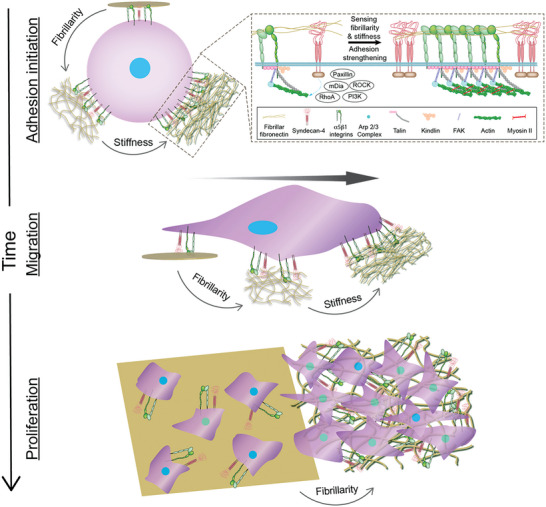Figure 7.

α5β1 integrin and syndecan‐4 sense the fibrillarity and mechanical stiffness of FN matrices and crosstalk to establish and regulate cell adhesion, migration, and proliferation. In fibroblasts α5β1 integrin and syndecan‐4 use multiple pathways to sense the fibrillarity and stiffness of FN. First, α5β1 integrin and syndecan‐4 bind to fibrillar FN and initiate cell adhesion. Within seconds, fibroblasts activate signaling pathways, which include mDia, Arp2/3, RhoA, paxillin, and PI3K, to strengthen adhesion to stiffer fibrillar FN by potentially polymerizing actin and myosin II‐mediated contraction. As adhesion matures, ROCK and FAK, in addition to the above‐mentioned signaling molecules, activate to further increase cell adhesion to both softer and stiffer fibrillar FN. Fibroblasts adhering to fibrillar FN matrices accelerate migration speed and enhance proliferation via α5β1 integrin and syndecan‐4. Although fibroblasts instantly sense fibrillar FN matrices via α5β1 integrin and syndecan‐4, both cell surface receptors are required to enhance migration speed ad proliferation for the time course of weeks. Upon stiffening of the fibrillar FN matrices the cell migration and proliferation further increase.
